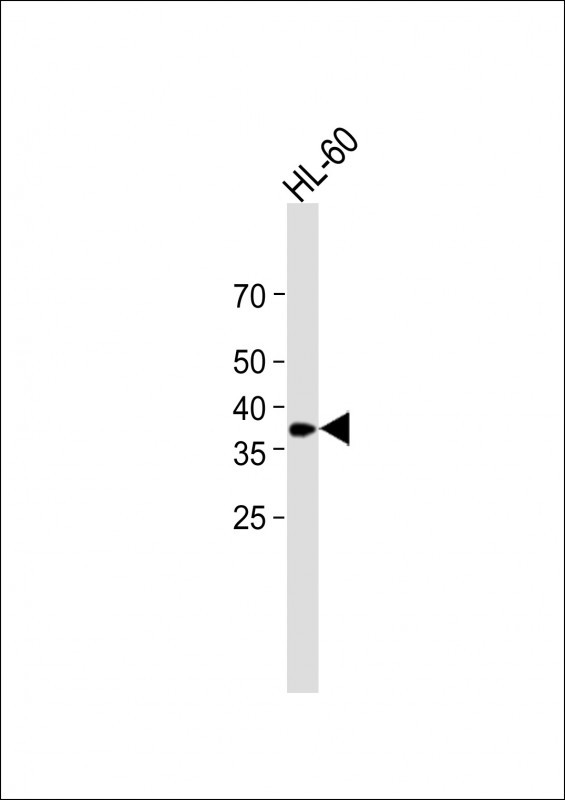CDX2 Antibody (N-term)
Purified Rabbit Polyclonal Antibody (Pab)
- 产品详情
- 实验流程
- 背景知识
Application
| WB, IHC-P, E |
|---|---|
| Primary Accession | Q99626 |
| Other Accession | P43241 |
| Reactivity | Human |
| Predicted | Mouse |
| Host | Rabbit |
| Clonality | Polyclonal |
| Isotype | Rabbit IgG |
| Calculated MW | 33520 Da |
| Antigen Region | 1-30 aa |
| Gene ID | 1045 |
|---|---|
| Other Names | Homeobox protein CDX-2, CDX-3, Caudal-type homeobox protein 2, CDX2, CDX3 |
| Target/Specificity | This CDX2 antibody is generated from rabbits immunized with a KLH conjugated synthetic peptide between 1-30 amino acids from the N-terminal region of human CDX2. |
| Dilution | WB~~1:500 IHC-P~~1:100~500 E~~Use at an assay dependent concentration. |
| Format | Purified polyclonal antibody supplied in PBS with 0.05% (V/V) Proclin 300. This antibody is purified through a protein A column, followed by peptide affinity purification. |
| Storage | Maintain refrigerated at 2-8°C for up to 2 weeks. For long term storage store at -20°C in small aliquots to prevent freeze-thaw cycles. |
| Precautions | CDX2 Antibody (N-term) is for research use only and not for use in diagnostic or therapeutic procedures. |
| Name | CDX2 |
|---|---|
| Synonyms | CDX3 |
| Function | Transcription factor which regulates the transcription of multiple genes expressed in the intestinal epithelium (By similarity). Binds to the promoter of the intestinal sucrase-isomaltase SI and activates SI transcription (By similarity). Binds to the DNA sequence 5'-ATAAAAACTTAT-3' in the promoter region of VDR and activates VDR transcription (By similarity). Binds to and activates transcription of LPH (By similarity). Activates transcription of CLDN2 and intestinal mucin MUC2 (By similarity). Binds to the 5'-AATTTTTTACAACACCT-3' DNA sequence in the promoter region of CA1 and activates CA1 transcription (By similarity). Important in broad range of functions from early differentiation to maintenance of the intestinal epithelial lining of both the small and large intestine. Binds preferentially to methylated DNA (PubMed:28473536). |
| Cellular Location | Nucleus {ECO:0000250|UniProtKB:P43241}. |
| Tissue Location | Detected in small intestine, colon and pancreas. |
For Research Use Only. Not For Use In Diagnostic Procedures.
Provided below are standard protocols that you may find useful for product applications.
BACKGROUND
The caudal type homeo box transcription factors 1 (CDX1) and 2 (CDX2) are candidates for directing intestinal development, differentiation, and maintenance of the intestinal phenotype. CDX1 and CDX2 expression is widely present in the human intestinal and colonic mucosae, but not in the gastric mucosa, suggesting a possible role in the terminal differentiation of the intestine. Increased CDX2 expression is associated with chronic atrophic gastritis. Detectable expression of CDX2 precedes expression of CDX1 during the progression of intestinal metaplasia, thus expression of CDX2 may trigger the initiation and development of intestinal metaplasia. Markedly reduced or absent CDX2 expression was noted by immunohistochemistry in 13 of 15 (87%) large cell minimally differentiated carcinomas (LCMDCs), whereas only 1 of the 25 (4%) differentiated adenocarcinomas (DACs) showed reduced CDX2 expression. Thus, a significant decrease in human CDX1 and/or CDX2 expression may be associated with colorectal tumorigenesis.
REFERENCES
Phillips, R.W., et al., Am. J. Surg. Pathol. 27(11):1442-1447 (2003).
Bai, Y.Q., et al., Oncogene 22(39):7942-7949 (2003).
Yamamoto, H., et al., Biochem. Biophys. Res. Commun. 300(4):813-818 (2003).
Eda, A., et al., J. Gastroenterol. 37(2):94-100 (2002).
Moucadel, V., et al., Biochem. Biophys. Res. Commun. 297(3):607-615 (2002).
终于等到您。ABCEPTA(百远生物)抗体产品。
点击下方“我要评价 ”按钮提交您的反馈信息,您的反馈和评价是我们最宝贵的财富之一,
我们将在1-3个工作日内处理您的反馈信息。
如有疑问,联系:0512-88856768 tech-china@abcepta.com.























 癌症的基本特征包括细胞增殖、血管生成、迁移、凋亡逃避机制和细胞永生等。找到癌症发生过程中这些通路的关键标记物和对应的抗体用于检测至关重要。
癌症的基本特征包括细胞增殖、血管生成、迁移、凋亡逃避机制和细胞永生等。找到癌症发生过程中这些通路的关键标记物和对应的抗体用于检测至关重要。 为您推荐一个泛素化位点预测神器——泛素化分析工具,可以为您的蛋白的泛素化位点作出预测和评分。
为您推荐一个泛素化位点预测神器——泛素化分析工具,可以为您的蛋白的泛素化位点作出预测和评分。 细胞自噬受体图形绘图工具为你的蛋白的细胞受体结合位点作出预测和评分,识别结合到自噬通路中的蛋白是非常重要的,便于让我们理解自噬在正常生理、病理过程中的作用,如发育、细胞分化、神经退化性疾病、压力条件下、感染和癌症。
细胞自噬受体图形绘图工具为你的蛋白的细胞受体结合位点作出预测和评分,识别结合到自噬通路中的蛋白是非常重要的,便于让我们理解自噬在正常生理、病理过程中的作用,如发育、细胞分化、神经退化性疾病、压力条件下、感染和癌症。







